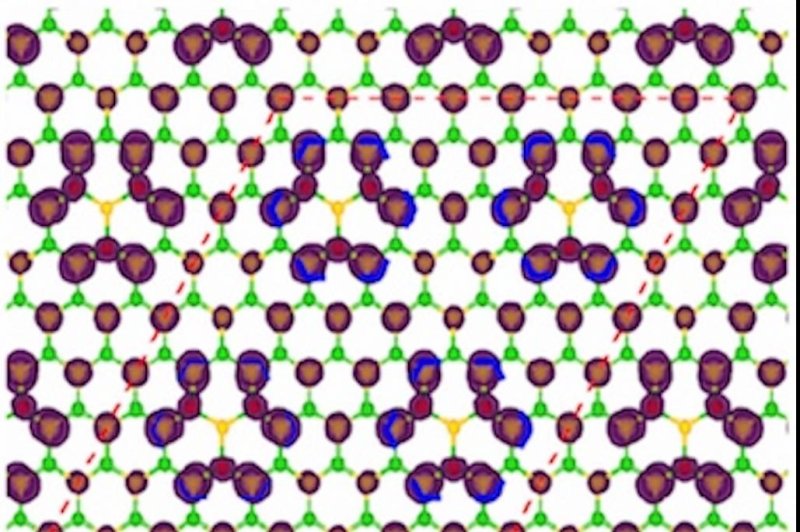An illustration shows the unique atomic structure of fluorinated white graphene. Photo Courtesy Ajayan Group/Rice University
July 14 (UPI) -- With just a bit of fluorine, white graphene becomes a wide-bandgap semiconductor with magnetic properties. The new material could be used in electronics designed to perform under extreme conditions.
White graphene is a two-dimensional atomic sheet of hexagonal boron nitride. Its hexagonal structure is similar to that of regular graphene, but the atomic layer is made up of boron nitride, a combination of boron and nitrogen atoms, instead of carbon.
White graphene is more chemically and electrically stable than graphene, allowing it to function under more extreme circumstances, like in space.
But the material is typically employed as an insulator, not a semi-conductor.
"Boron nitride is a stable insulator and commercially very useful as a protective coating, even in cosmetics, because it absorbs ultraviolet light," Pulickel Ajayan, a material scientist at Rice University, said in a news release. "There has been a lot of effort to try to modify its electronic structure, but we didn't think it could become both a semiconductor and a magnetic material."
By adding a small amount of fluorine, scientists at Rice were able to decrease white graphene's bandgap enough to turn the material into a semiconductor. Bandgap describes the amount of energy required to generate an electric current.
"We saw that the gap decreases at about 5 percent fluorination," said Rice postdoctoral researcher Chandra Sekhar Tiwary.
"Controlling the precise fluorination is something we need to work on," Tiwary said. "We can get ranges but we don't have perfect control yet. Because the material is atomically thin, one atom less or more changes quite a bit."
Scientists hope further tests will enable them to fine tune the fluorination.
Surprisingly, researchers also found the addition of fluorine altered the spin of electrons in the material's nitrogen atoms, lending white graphene magnetic properties.
"We see angle-oriented spins, which are very unconventional for 2-D materials," said Rice graduate student Sruthi Radhakrishnan.
Researchers described the new material in the journal Science Advances.
Scientists in England recently used white graphene to create a tiny, low-energy sensor.















